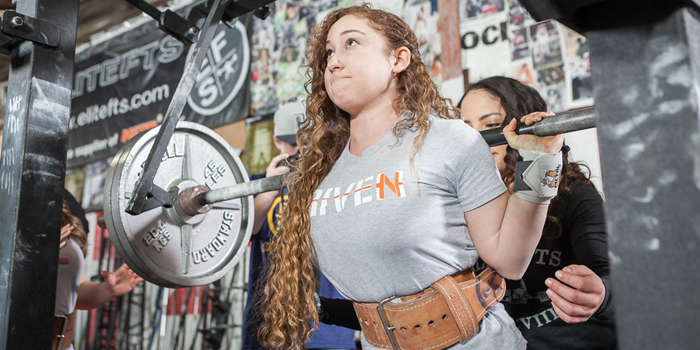
The holidays are right around the corner. For those of you not bulking or working on your bloat, you might have some concerns about how to beat the sometimes-inevitable holiday weight gain. You know, that extra layer of fluff that accumulates by the beginning of the New Year. So, for those of you concerned and looking to fight the holiday weight gain, I have some suggestions on how you can introduce some counteracting cardio into your training (that shouldn’t cause your strength to take a hit).
Sneak some cardio into your warm-up and cool-down.
Before training, it's a good idea to have a general and then specific warm-up. In the general warm-up, the purpose is to increase blood flow to the working muscles and tissues whereas, in a specific warm-up, the purpose is to prepare your muscles for the work, movements, and range of motions you plan to use during your training session. After training it is also a good idea to include a cool-down, which consists of some low intensity cardio to aid in returning your breathing and heart rate to normal levels. Luckily, all three are also excellent opportunities to sneak some cardio into your fight against holiday fluff.
Application
General Warm-Up: Bike, treadmill walk, elliptical, or stepper at a low intensity for 10 minutes before starting your training session.
Specific Warm-Up: Add some prework, in a circuit style, to your training after your warm-up and before your actual main training session. Additionally, you can make one of the exercises in the circuit more dynamic (i.e., 10 to 50 meter sprints before squats, medicine ball slams before benching) to increase the calorie burn.
Cool-Down: Again, bike, treadmill walk, elliptical, or stepper at a low intensity for 10 minutes at the end of your training session.
Sprinkle some cardio between your sets.
Resistance training (lifting) is very anaerobic (without oxygen), but the recovery for you to do each set is aerobic (requires oxygen). When you do heavy lifts, you take two to three minutes of recovery between sets so your anaerobic energy stores can be replenished. The recovery during this period is aerobic, so you can take advantage of that by programming some cardio into that window.

Photo credit: luckybusiness © 123RF.com
Application
If you are worried about your strength on lifts staying up: Just do some light aerobic work between your heavy sets. Trade the time you would be sitting on your phone waiting for three minutes of rest to pass for five minutes of low-intensity cardio on the treadmill or elliptical.
If you aren’t worried about your strength on lifts staying up: Superset your main lifts with two minutes of aerobic work, which gets your heart rate up a bit (i.e., jumping rope, rowing, kettlebell swings). Here hit your lift, then hit your cardio, and then take an extra one to two minutes rest before repeating.
Make your assistance work a circuit to keep your heart rate up.
Circuit training is basically when you take a group of exercises in the 12 to 15 rep range (or 30 seconds of time under tension) and sequentially go through them with minimal rest (15 to 30 seconds, or the time it takes to walk from one piece of equipment to another). Circuits cause your heart rate to elevate, making them calorie burning and aerobic. So, rather than resting between each exercise, or supersetting two exercises, try turning you assistance work into a circuit. That way, you can work on your weak points while burning some extra calories.
Application
Pick a couple of assistance exercises that complement your training, as well as one metabolic one (battle ropes, tire flips, hammer swings, etc.) and put them together circuit style. Rest up to one minute between circuits.
Ditch the elevators and park far away from November through February.
When you are out of the gym, the easiest way to sneak cardio into your life is to make it part of your daily routine. It doesn’t take many steps to add up to a mile of cardio in a day, and just walking around is highly unlikely to affect your strength. So, look for reasons to make your daily life a bit more cardiovascular in nature.
Application
Park your car at the end of the lot, every time. Take the stairs whenever the option exists. Walk to places when you can (rather than drive).
Summing It Up
The holidays are almost here, but that doesn’t mean you need to pack on extra layers of fluff. Instead, take a few proactive measures to keep your body composition in check without causing a massive shift in your training. Following one, any, or all of the above suggestions is a solid way to help prevent packing on some holiday pounds and to keep your strength gains strong. However, none of the above are countermeasures to spending the entire Holiday period overindulging!











1 Comment